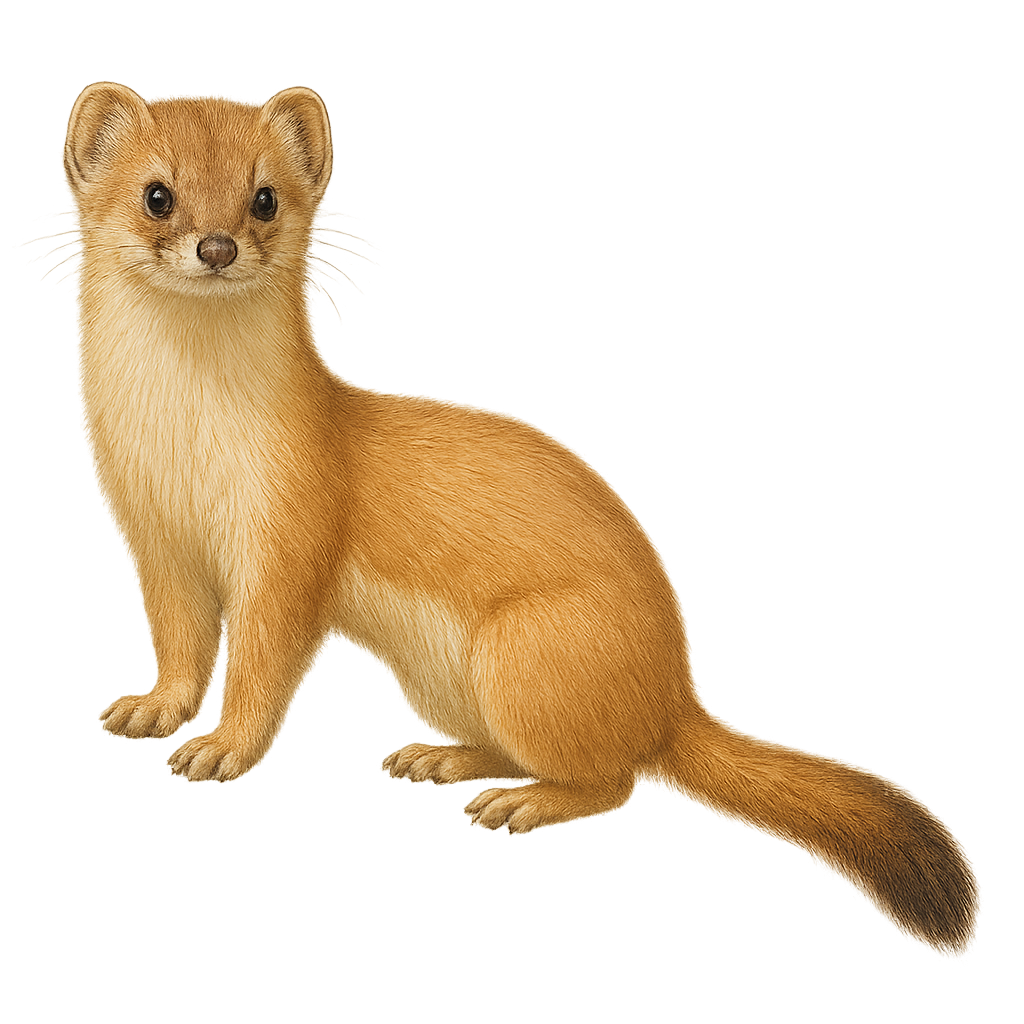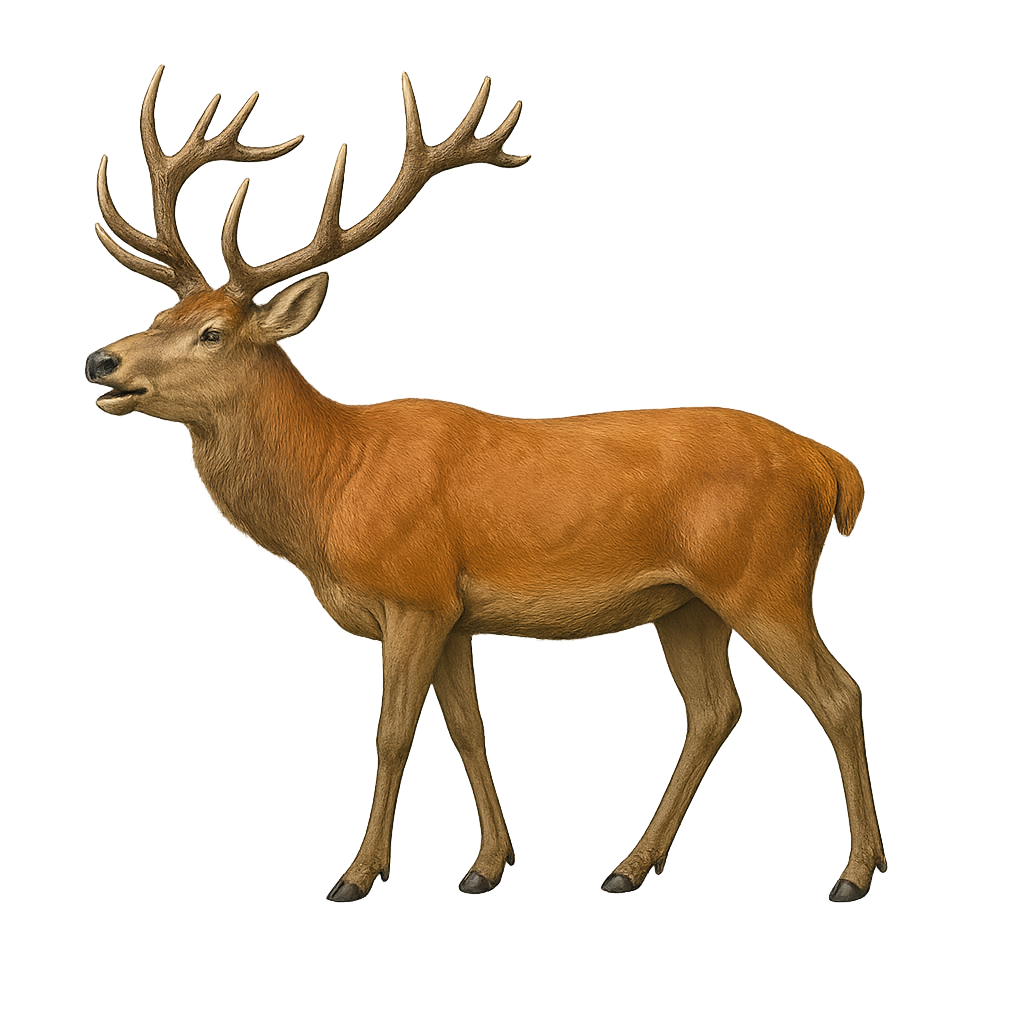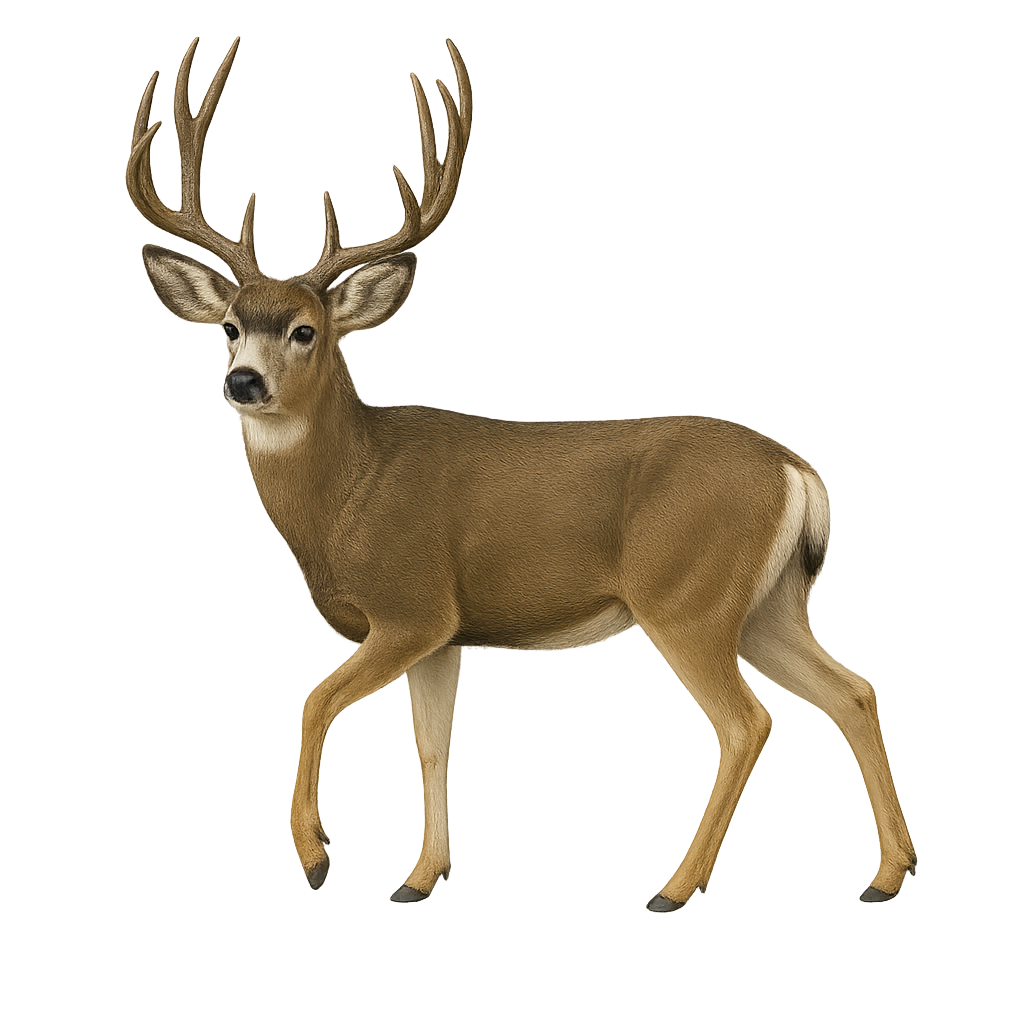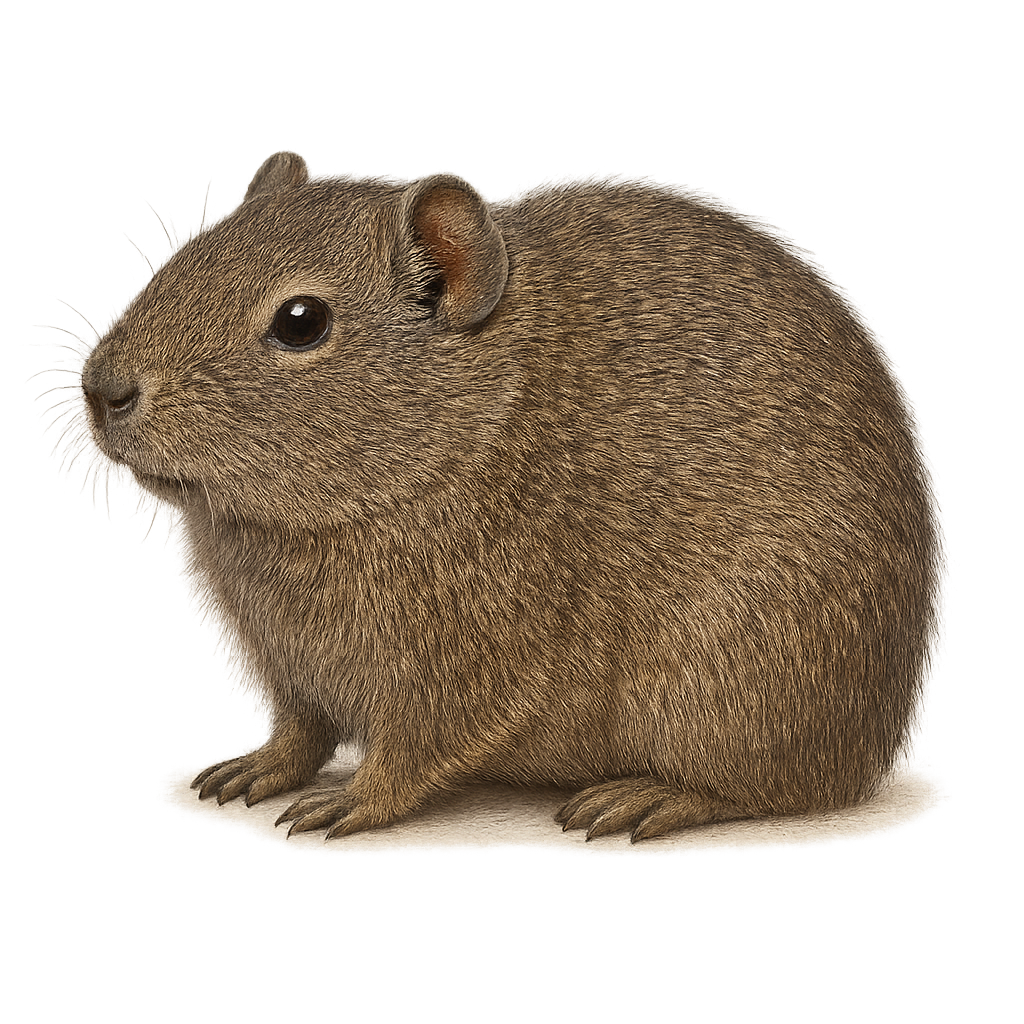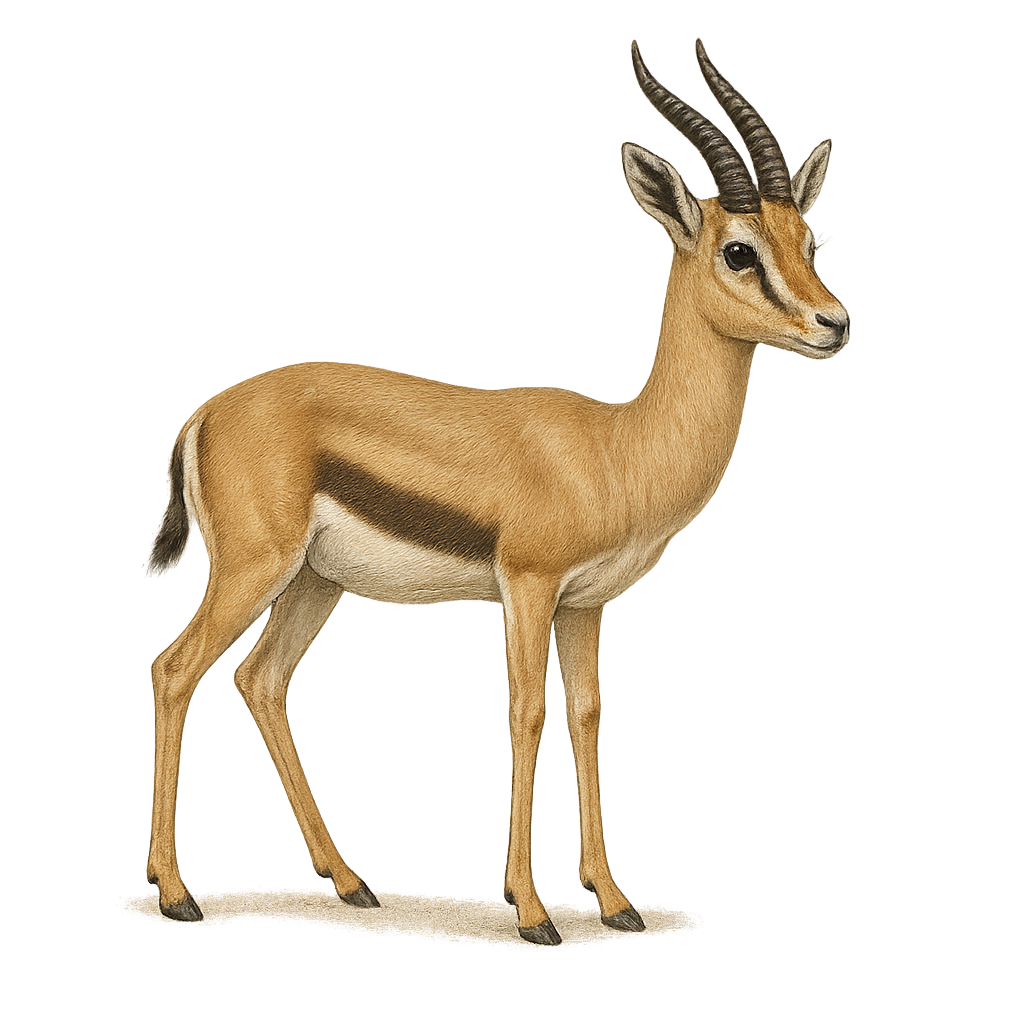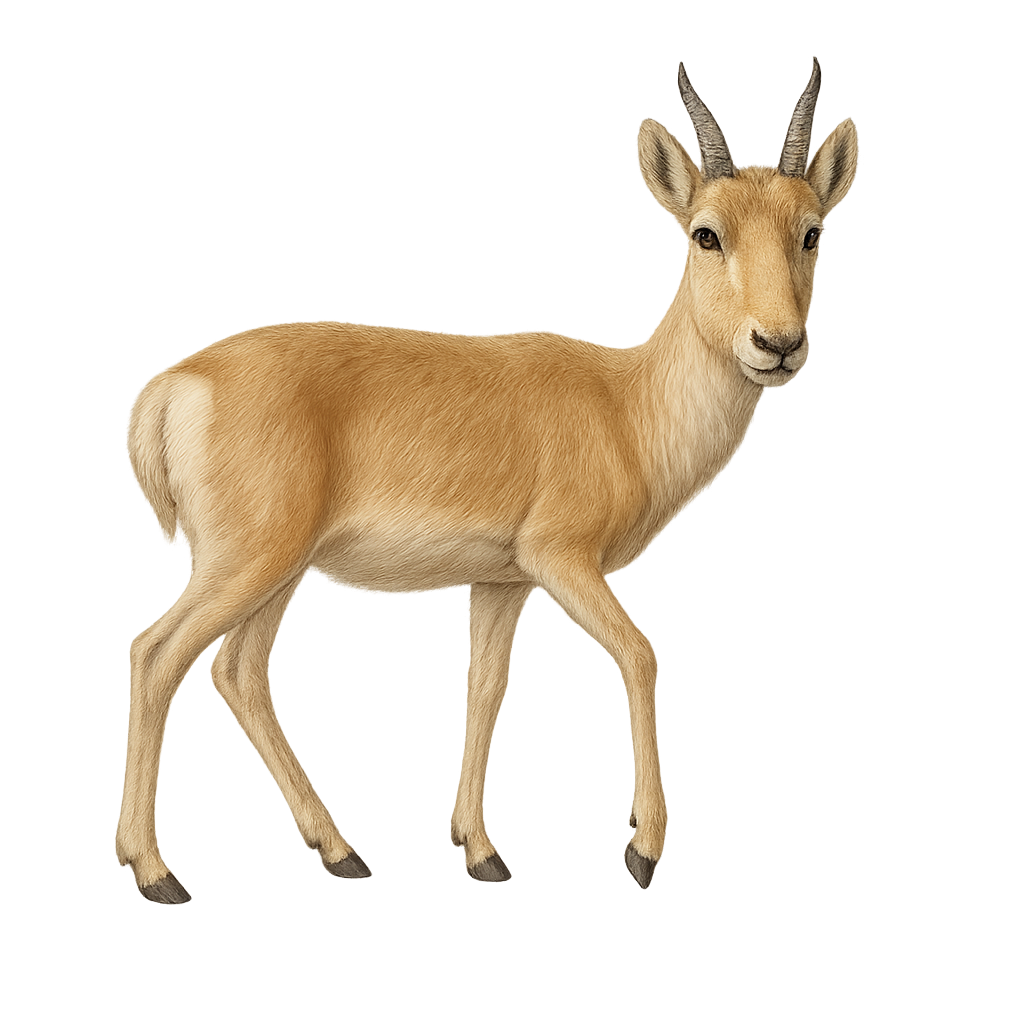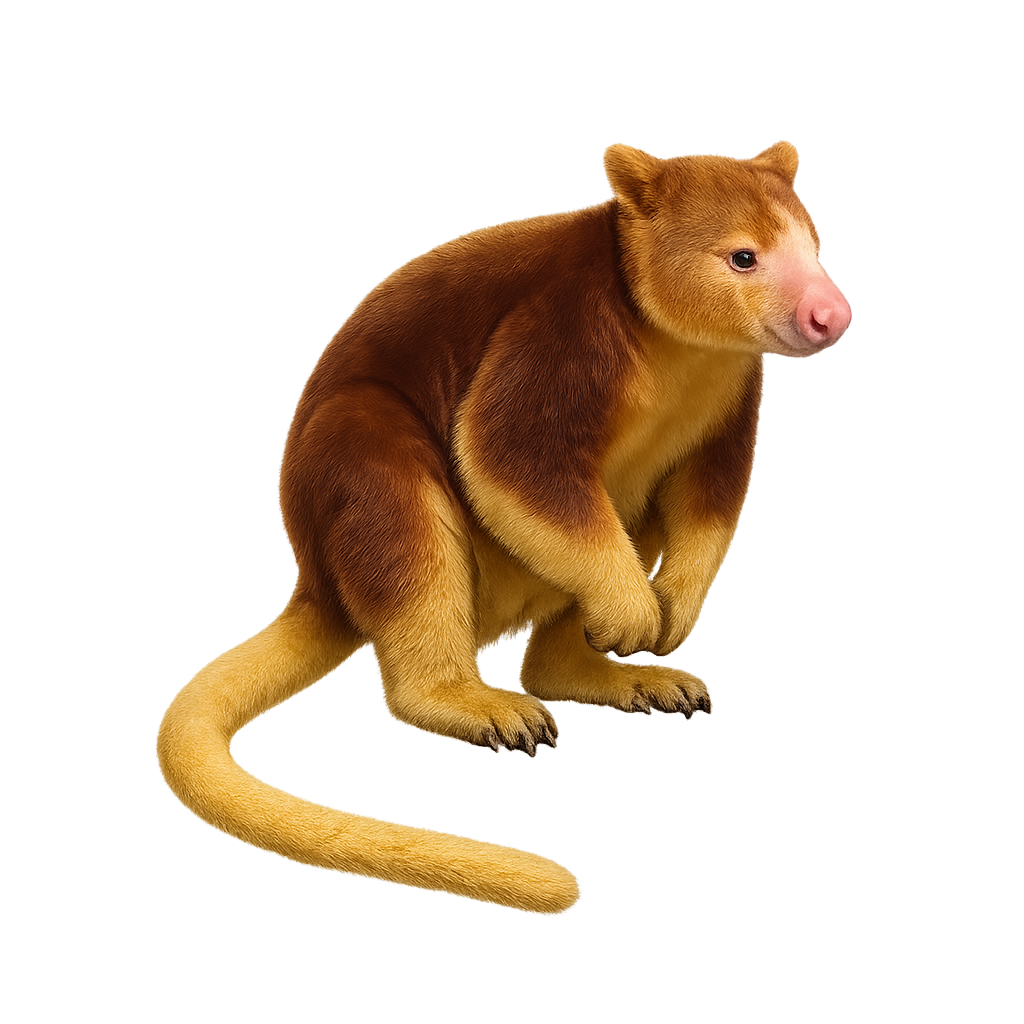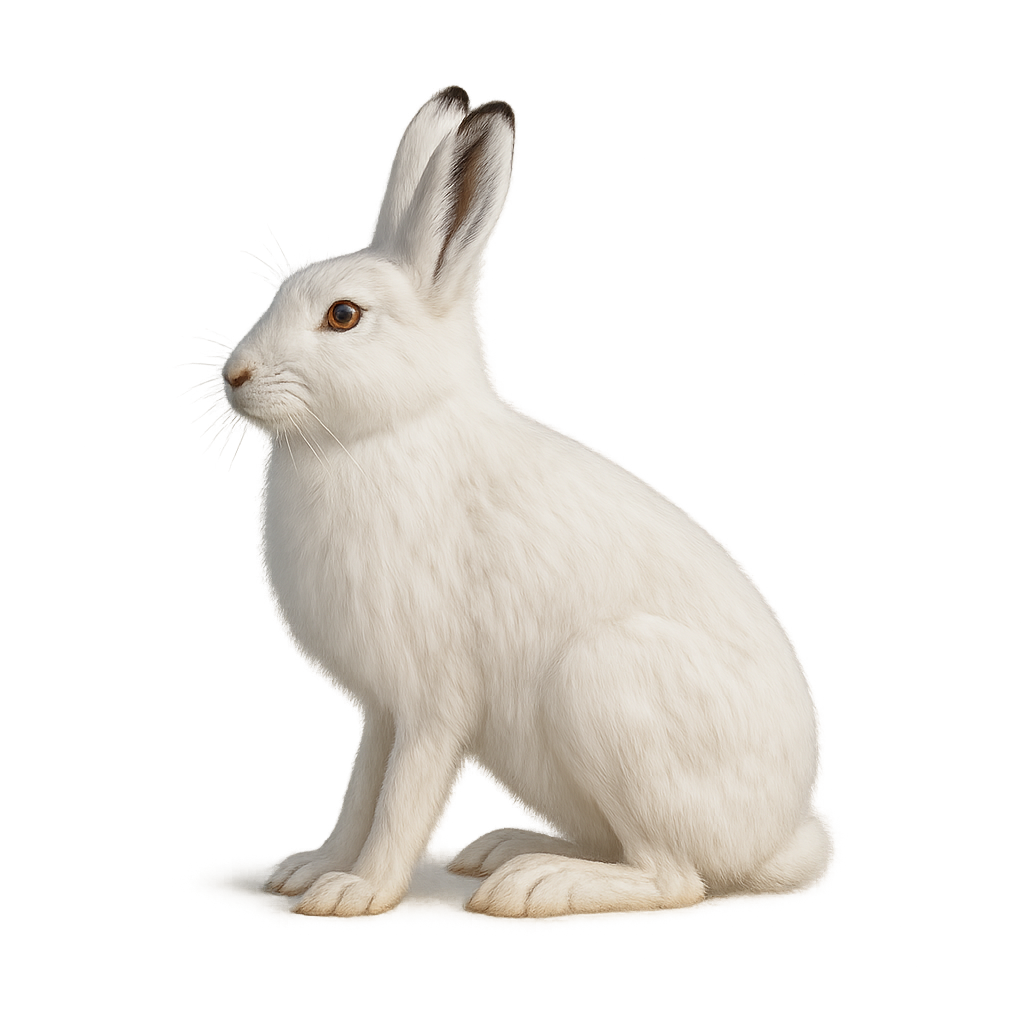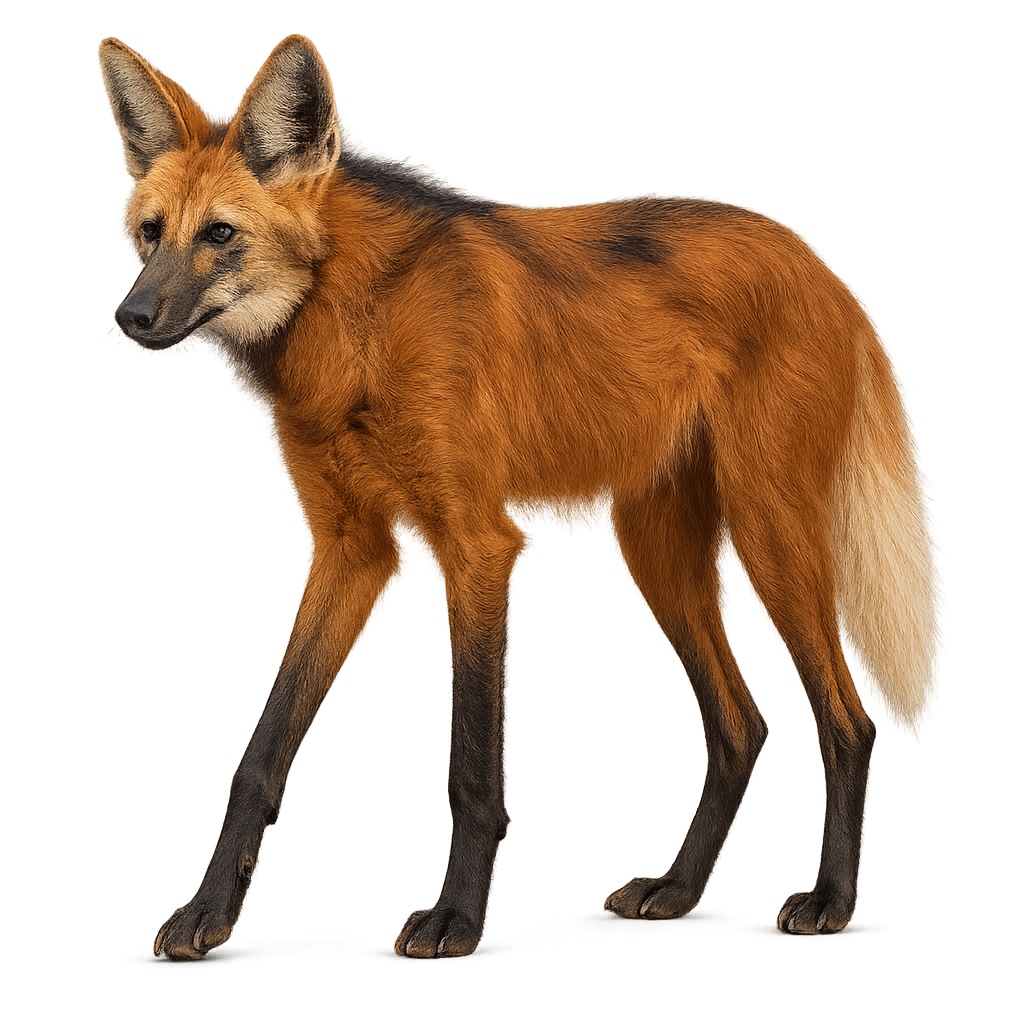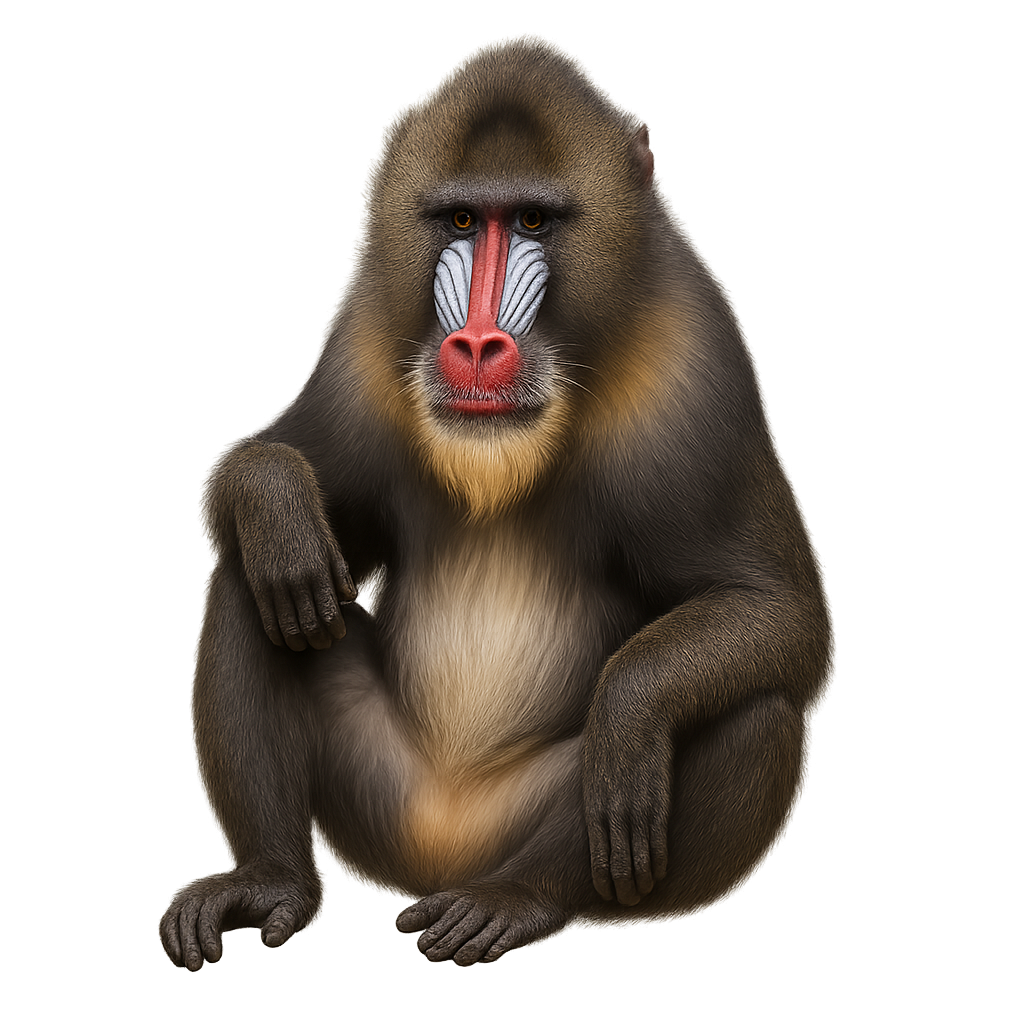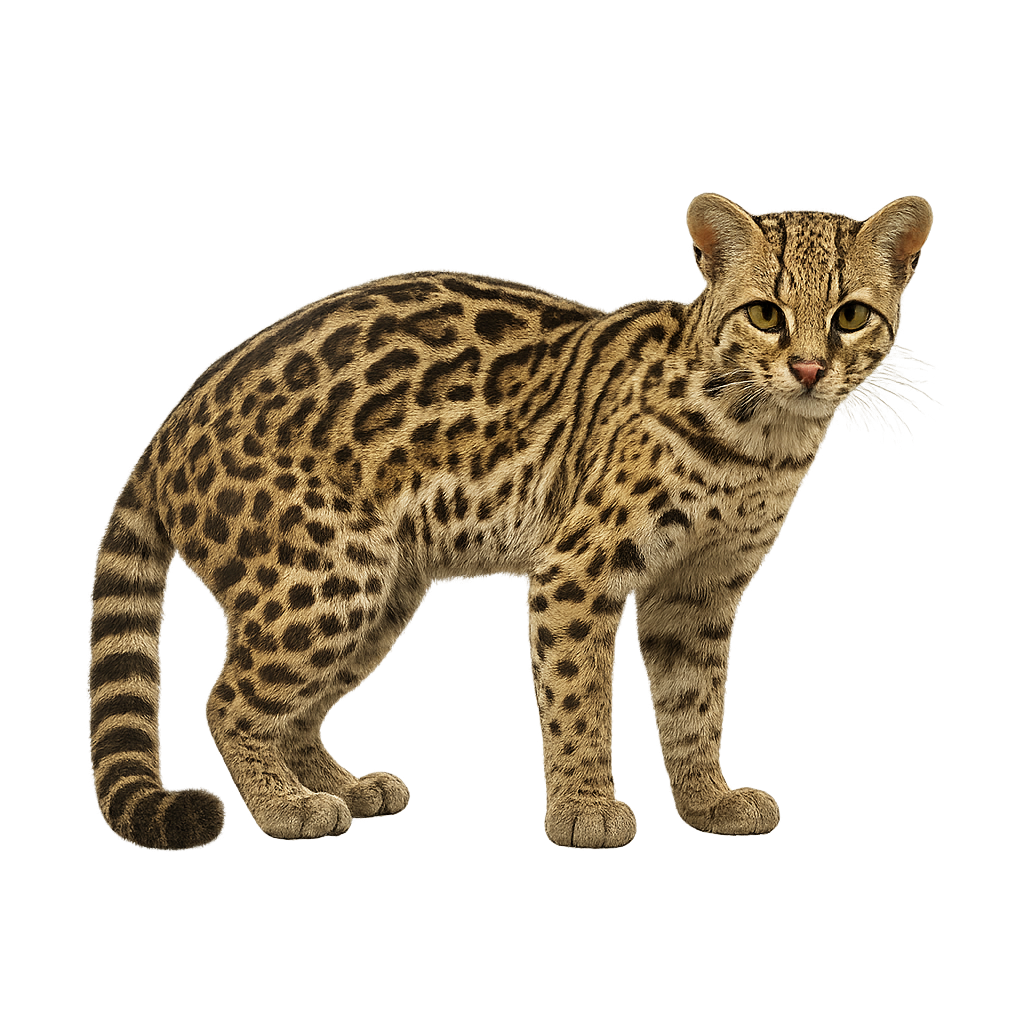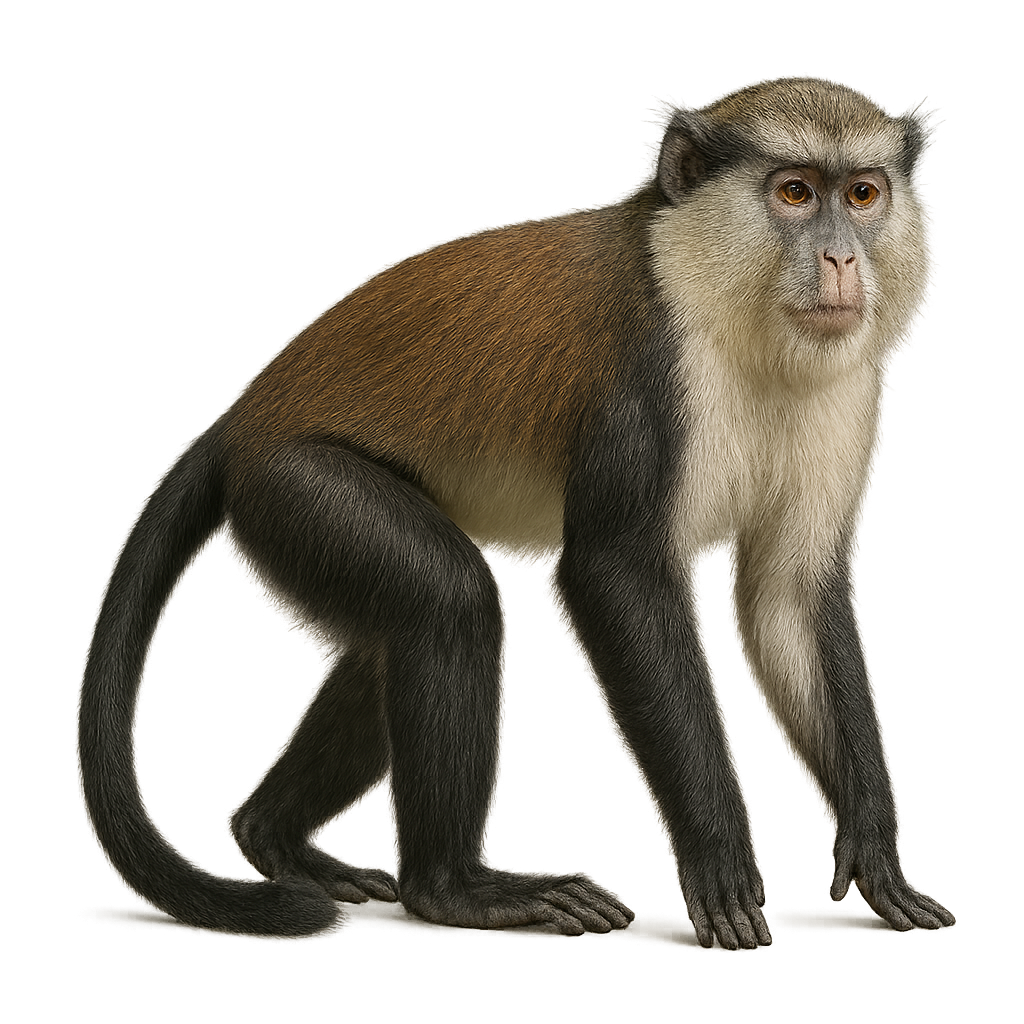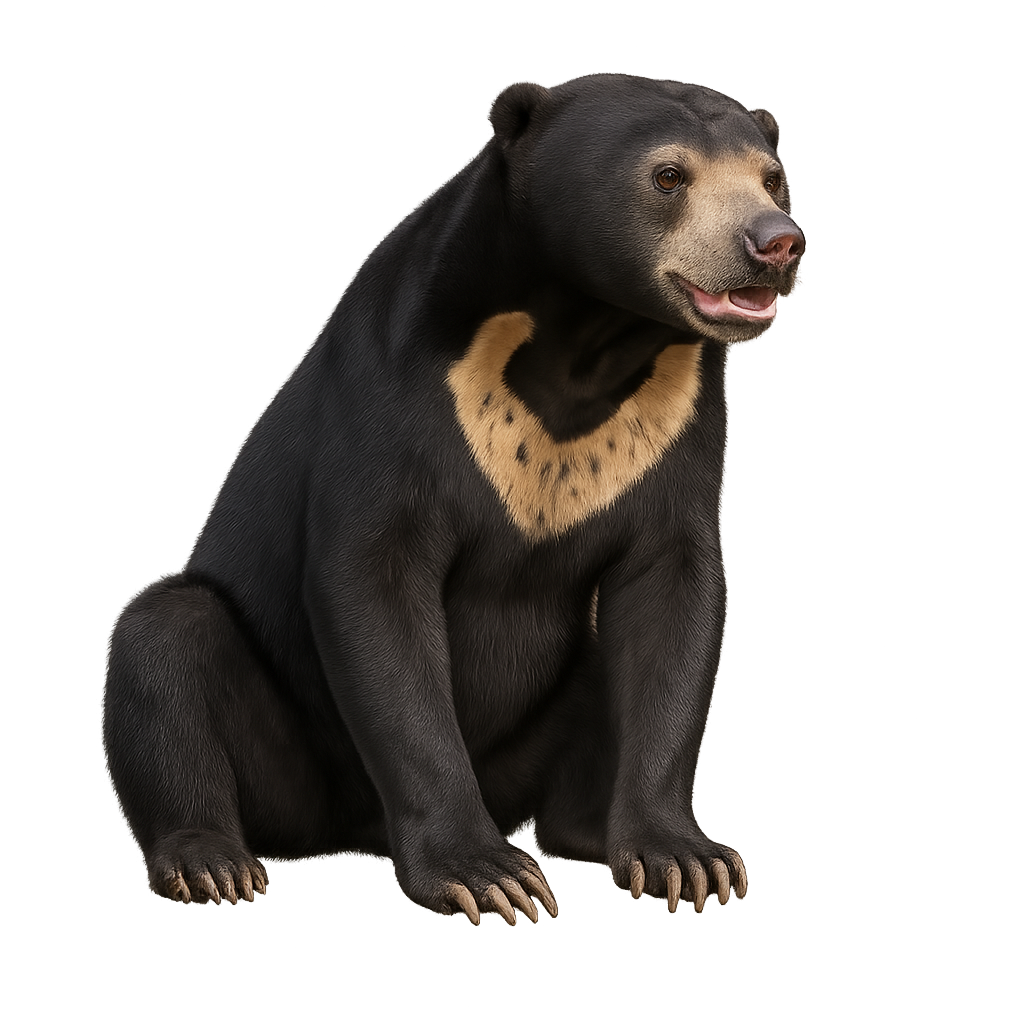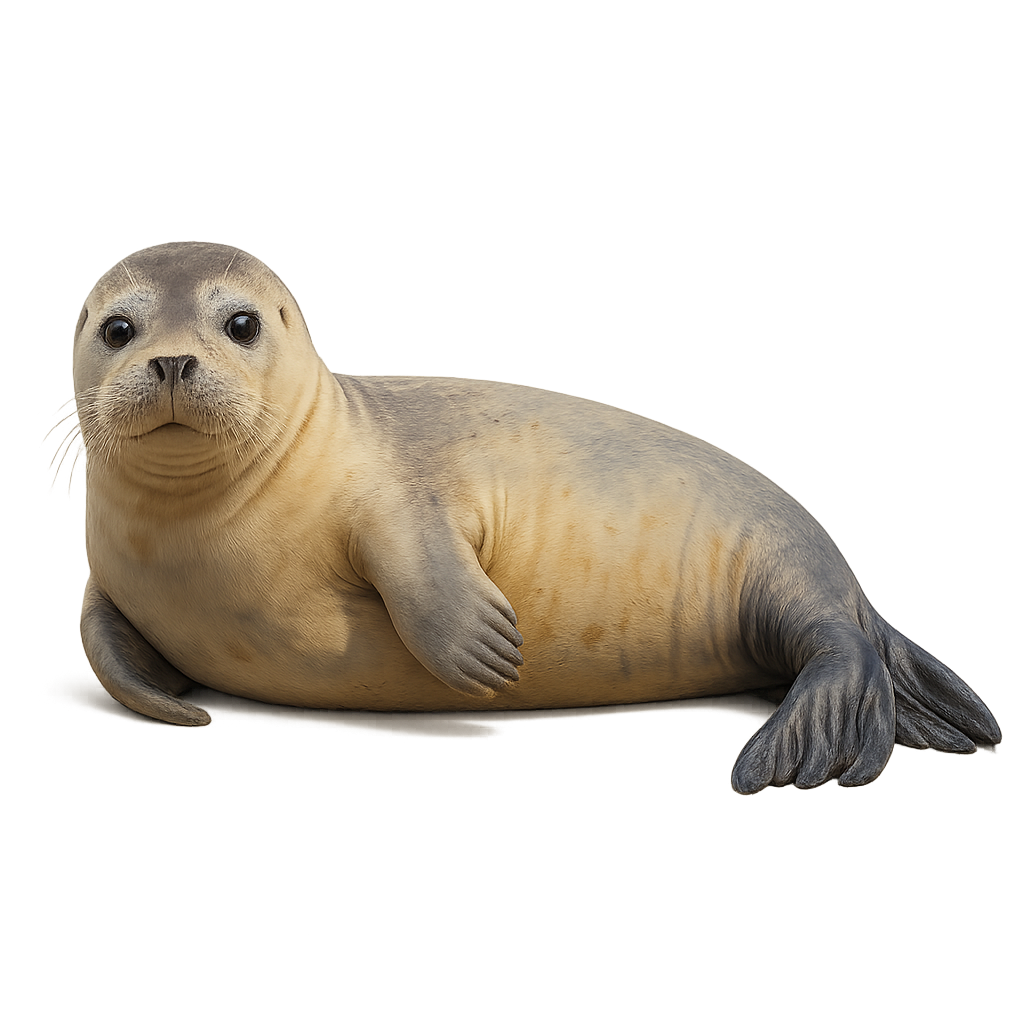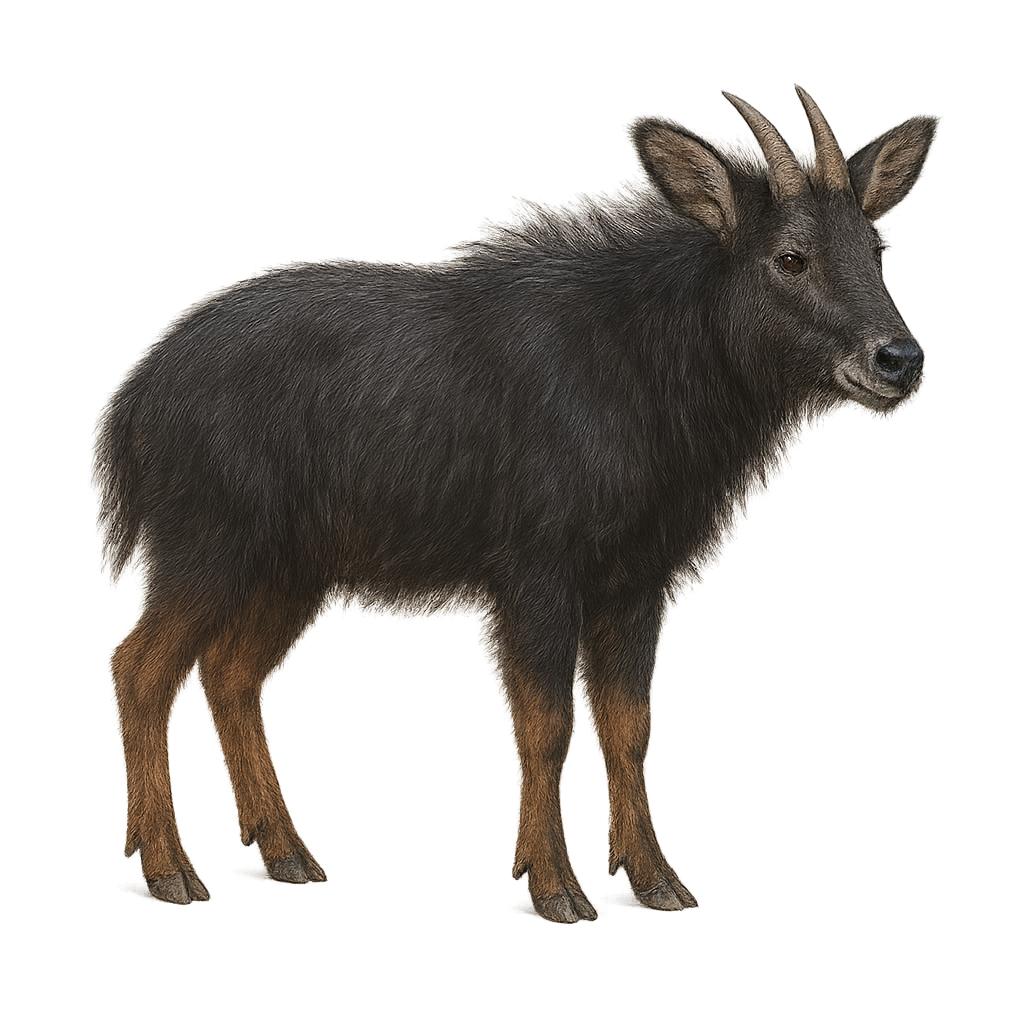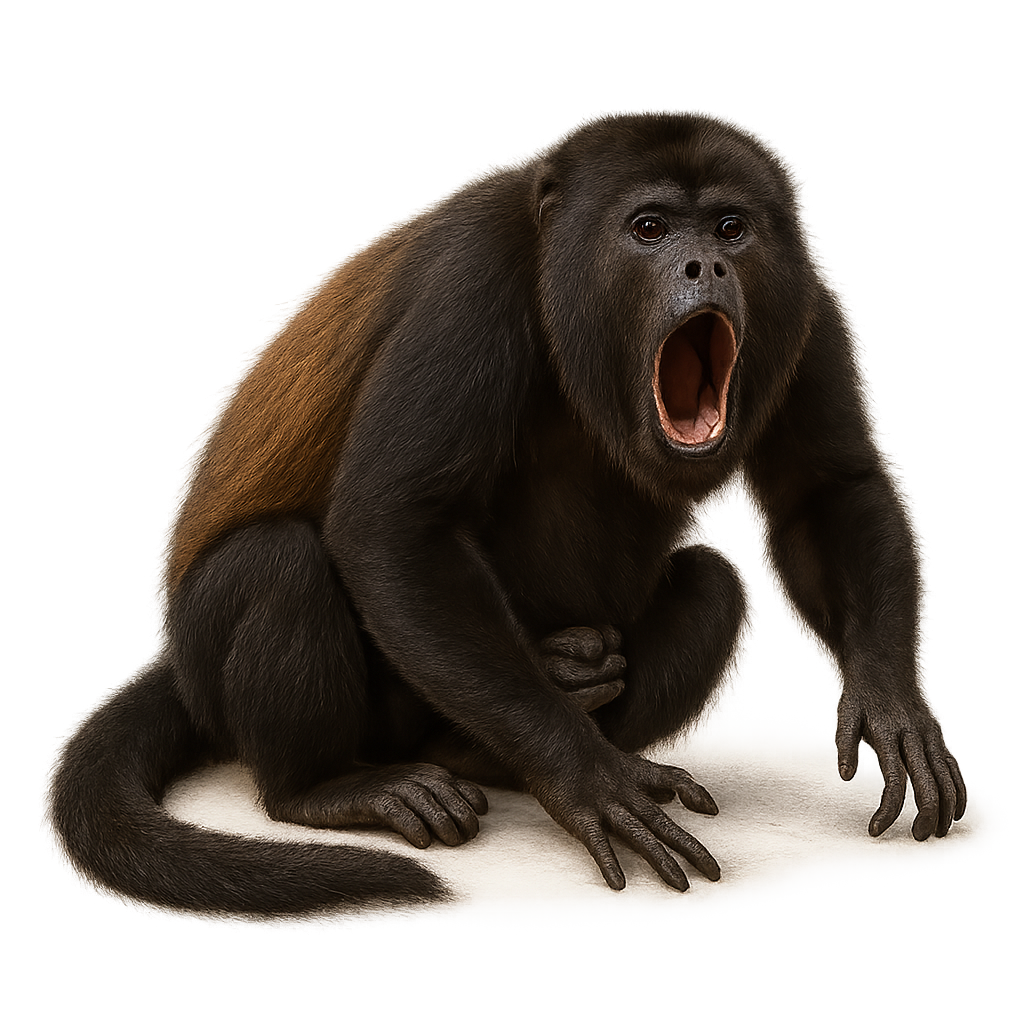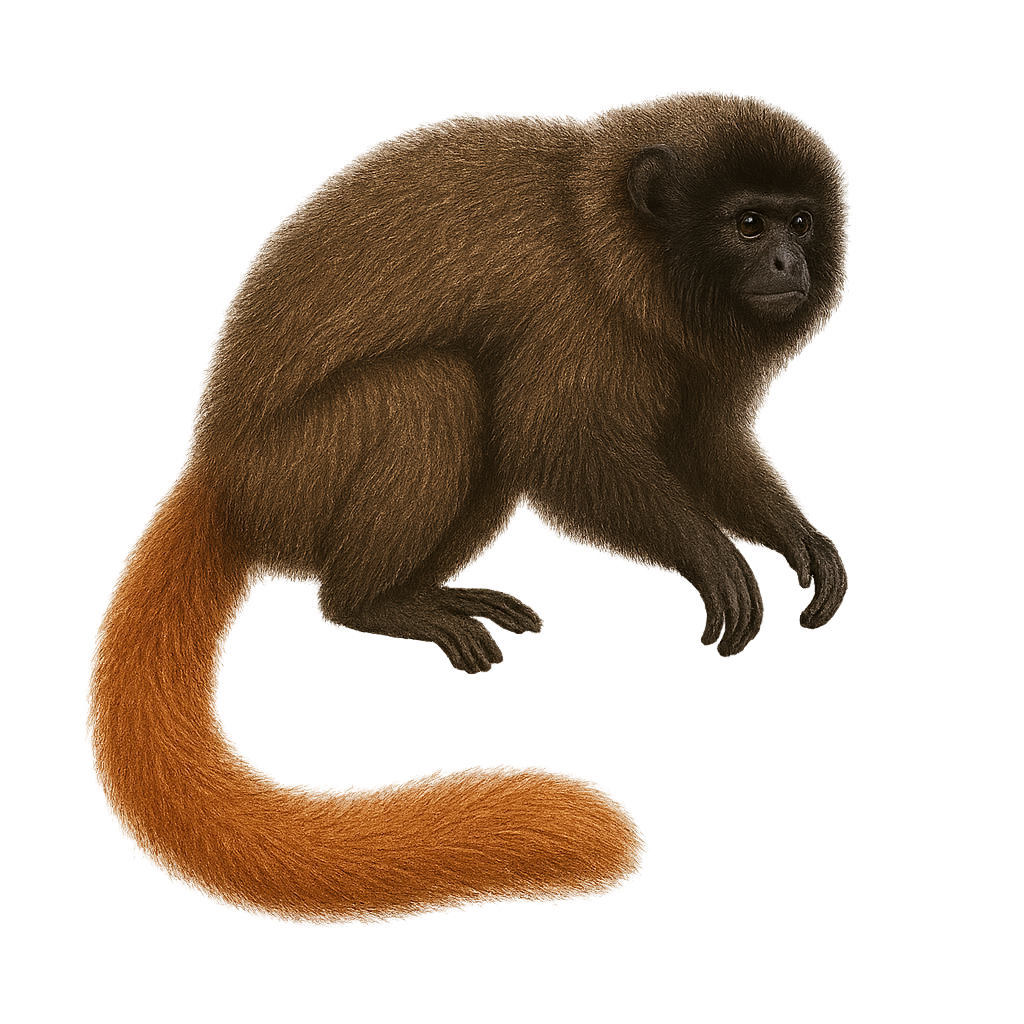The mountain weasel, Mustela altaica, is a small mustelid native to the mountainous regions of Central Asia. It is characterized by its dense, silky fur, typically light to dark brown, with a lighter underside. Its body length ranges from 22 to 29 cm, with a tail measuring about 12 to 15 cm. Adapted to cold environments, it is often found in alpine meadows, coniferous forests, and rocky areas. As a carnivore, it primarily feeds on small mammals, birds, and insects. Although elusive, it plays a crucial role in controlling rodent populations.
The Musk Ox is a large herbivorous mammal, easily recognized by its thick brown fur that protects it from the freezing temperatures of the Arctic. This robust animal, with curved horns and a massive build, primarily inhabits the cold regions of Canada, Greenland, Alaska, and Norway. The Musk Ox feeds on woody plants, lichens, and mosses, which it finds in Arctic and sub-Arctic zones. It forms social groups to protect itself from predators and extreme weather conditions.
Adapted to harsh environments, the Musk Ox is an extremely resilient animal, capable of surviving extremely low temperatures due to its dense coat. However, it remains vulnerable to climate change, habitat loss, and human disturbances, which threaten its population.
The Maral Red Deer, a subspecies of the red deer, is a majestic cervid primarily inhabiting the mountainous and forested regions of Central Asia. Recognizable by its large size and impressive antlers, the maral symbolizes power and grace. Its coat ranges from brown to gray, lightening in winter. Males sport magnificent branched antlers, which they shed annually after the rutting season. The maral is a gregarious animal, living in herds, especially outside the breeding season. It primarily feeds on grasses, leaves, and young shoots. Although its habitat is threatened by human expansion, the maral remains an iconic species of Asian wildlife.
The mule deer is a North American deer species known for its large, mule-like ears. Its coat ranges from gray to brown, becoming lighter in winter. Males have branched antlers that they shed annually. Adapted to rugged terrain, they prefer mountainous and open forest habitats. Primarily herbivorous, they feed on leaves, grasses, and young shoots. Mule deer are social animals, often forming small groups, especially in winter. They are generally wary, making them challenging to approach.
The Mountain Goat is a robust mammal well adapted to life in the rugged mountains and rocky terrain of North America. This herbivore is easily recognizable by its white or cream-colored coat, which helps it blend into the snow and rocks. Its legs are specially adapted for climbing, with wide and rigid hooves that provide excellent traction on steep slopes.
The Mountain Goat feeds primarily on herbaceous plants, lichens, and moss, which it finds in rocky slopes and alpine meadows. While it is often perceived as a hardy species, it faces threats from habitat loss, poaching, and diseases transmitted by domestic animals. The population of Mountain Goats is closely monitored, and efforts are underway to protect this iconic species of the mountains.
The Galea musteloides, or mountain cavy, is a small rodent native to the Andean regions of South America. Often mistaken for the guinea pig, it is smaller and exhibits different behavioral and ecological traits. This rodent typically lives in social groups in varied habitats such as grasslands, forests, and rocky areas. It is primarily herbivorous, feeding on grasses, leaves, and fruits. Its fur is short and dense, usually brown-gray, allowing it to blend effectively into its natural environment. The Galea musteloides plays an important role in its ecosystem as prey for many predators and contributes to seed dispersal.
The Moose is a large deer found primarily in North America, particularly in coniferous forests and wetlands. It can reach up to 2 meters in height at the withers and weigh between 350 and 600 kg. Males are distinguished by their large antler racks, which can reach a span of 1.8 meters. Their coat is typically dark brown to black, with a lighter belly and a small mane of hair under the neck. The Moose is a herbivore, feeding mainly on leaves, branches, bark, fruits, and aquatic plants. It is an excellent swimmer and spends a great deal of its time feeding in lakes and rivers. While its population remains stable, it is threatened by habitat loss and hunting.
The Fossa fossana, also known as the Malagasy civet, is a small carnivorous mammal endemic to Madagascar. It is characterized by its grey-brown fur with black spots, which provides excellent camouflage in its natural habitat. Measuring about 50 cm in length, with a tail almost as long as its body, the Malagasy civet is primarily nocturnal. It inhabits the island's humid forests, feeding on small animals, insects, and fruits. Although often confused with the fossa, another Malagasy carnivore, the Malagasy civet belongs to a different family. Its population is threatened by deforestation and hunting, leading to its classification as near threatened by the IUCN.
The mountain gazelle, or Gazella gazella, is a graceful herbivorous mammal primarily inhabiting the arid and semi-arid regions of the Middle East. It is distinguished by its light brown coat, paler flanks, and lyre-shaped, ringed horns. Males are generally larger and have longer horns than females. This species is well adapted to its dry environment, capable of surviving with minimal water by extracting necessary moisture from its food. It is mainly active at dusk and dawn, avoiding the extreme daytime temperatures. The mountain gazelle is a social species, living in small groups, but can also be solitary. It is known for its speed and agility, allowing it to escape natural predators.
The Mongolian gazelle, or Procapra gutturosa, is a species of gazelle primarily inhabiting the vast steppes of Mongolia and parts of China. It is recognizable by its light brown coat, which helps it blend into its arid surroundings. Males are distinguished by their ringed horns and thicker necks, especially during the rutting season. These gazelles live in large herds, which provide protection against predators. They are extremely agile and can run at high speeds to escape danger. Their diet mainly consists of grasses and low-lying plants, adapted to the harsh climatic conditions of their habitat.
The Maasai Giraffe is a subspecies of giraffe, easily recognized by its irregular and jagged patches, which differ from those of other subspecies. It typically stands between 4.3 and 4.8 meters tall, with males being larger and heavier than females, weighing between 800 and 1,200 kg. Its coat is light beige to light brown, with irregularly shaped leaf-like patches that are bordered in white. These patches are smaller and more scattered than those of the Southern Giraffe. The Maasai Giraffe primarily inhabits the savannas and grasslands of East Africa, particularly in Kenya and Tanzania. It is herbivorous, feeding mainly on acacia leaves and other tall vegetation, which it reaches with its long neck and prehensile tongue. Although the Maasai Giraffe is currently considered less threatened than other giraffe subspecies, it faces threats such as habitat loss and poaching.
The mountain gorilla, Gorilla beringei beringei, is an iconic species primarily inhabiting the mountainous forests of the volcanic regions in Central Africa. Known for their thick fur, which is adapted to the cooler temperatures of their high-altitude habitat, these gorillas live in family groups led by a dominant male, known as a silverback. They are mainly herbivorous, feeding on leaves, stems, and fruits. Unfortunately, this species is critically endangered due to habitat loss, poaching, and disease. Conservation efforts are crucial for their survival, involving the protection of their natural habitat and raising awareness among local communities.
Matschie’s tree kangaroo is a medium-sized marsupial, 60–80 cm long (excluding tail), with reddish-brown fur and a long prehensile tail. Endemic to humid montane rainforests of the Huon Peninsula in Papua New Guinea (1000–3000 m), it spends most of its time in the canopy feeding on fruits, leaves, and insects. Solitary and elusive, it moves nimbly among branches thanks to strong limbs and a long tail.
The Mountain Hare is a small mammal, easily recognizable for its ability to change color according to the seasons. In winter, its coat becomes completely white, allowing it to blend perfectly into the snow, while in summer, it has a brown or gray coat, with darker shades on its back and lighter hues on its belly. It measures about 50 to 70 cm in length, with a tail of 6 to 8 cm, and weighs between 2 and 4 kg. The Mountain Hare is primarily found in the cold, mountainous regions of Northern Europe, Northern Asia, and certain mountainous areas of North America. It is a herbivorous animal that feeds on a variety of vegetation, primarily grasses, roots, fruits, and young shoots. It is mainly active at dusk and during the night, hiding in bushes or under grasses during the day. Although it is quite resilient to cold temperatures, the species is threatened by habitat loss and climate changes affecting its natural environment.
The Maned Wolf is a large carnivore native to South America, particularly known for its distinctive mane that surrounds its neck, giving the animal a majestic and unique appearance. It measures about 1 meter in body length, with a tail of about 30 to 40 cm, and weighs between 20 and 30 kg. Its coat is generally orange or golden in color, with darker shades on the head and legs, and a dark mane extending along its neck and throat. The Maned Wolf primarily inhabits the prairies and open savannas of Brazil, especially in the Pantanal region. It is an opportunistic predator, mainly feeding on small mammals, birds, and reptiles, but it can also consume fruits and plants. This wolf is an excellent runner and uses its speed to capture prey. Although the Maned Wolf is little known, it is an endangered species due to habitat loss, cattle trampling of land, and diseases. Conservation efforts are in place to protect this unique species.
The mandrill, Mandrillus sphinx, is a fascinating primate known for its spectacular appearance and complex social behaviors. Native to the tropical forests of Central Africa, it is primarily found in Gabon, Cameroon, and Equatorial Guinea. Males are particularly recognizable due to their colorful faces, with vivid shades of blue and red, and their yellow manes. Females and juveniles are more discreet, with less vibrant colors. Mandrills live in social groups called hordes, which can number up to several hundred individuals. They primarily feed on fruits, seeds, insects, and small animals. Although their habitat is threatened by deforestation, they are still relatively numerous in some protected areas.
The margay is a small arboreal wild cat species found from Mexico to northern Argentina. Solitary and nocturnal, it spends most of its time in trees, hunting birds, monkeys, and small mammals with exceptional climbing skills. It can rotate its ankles up to 180° to grasp branches and uses its long tail for balance. During the breeding season, the female emits a long moaning call to attract the male, which responds with trilling sounds and head shakes before mating high in the trees.
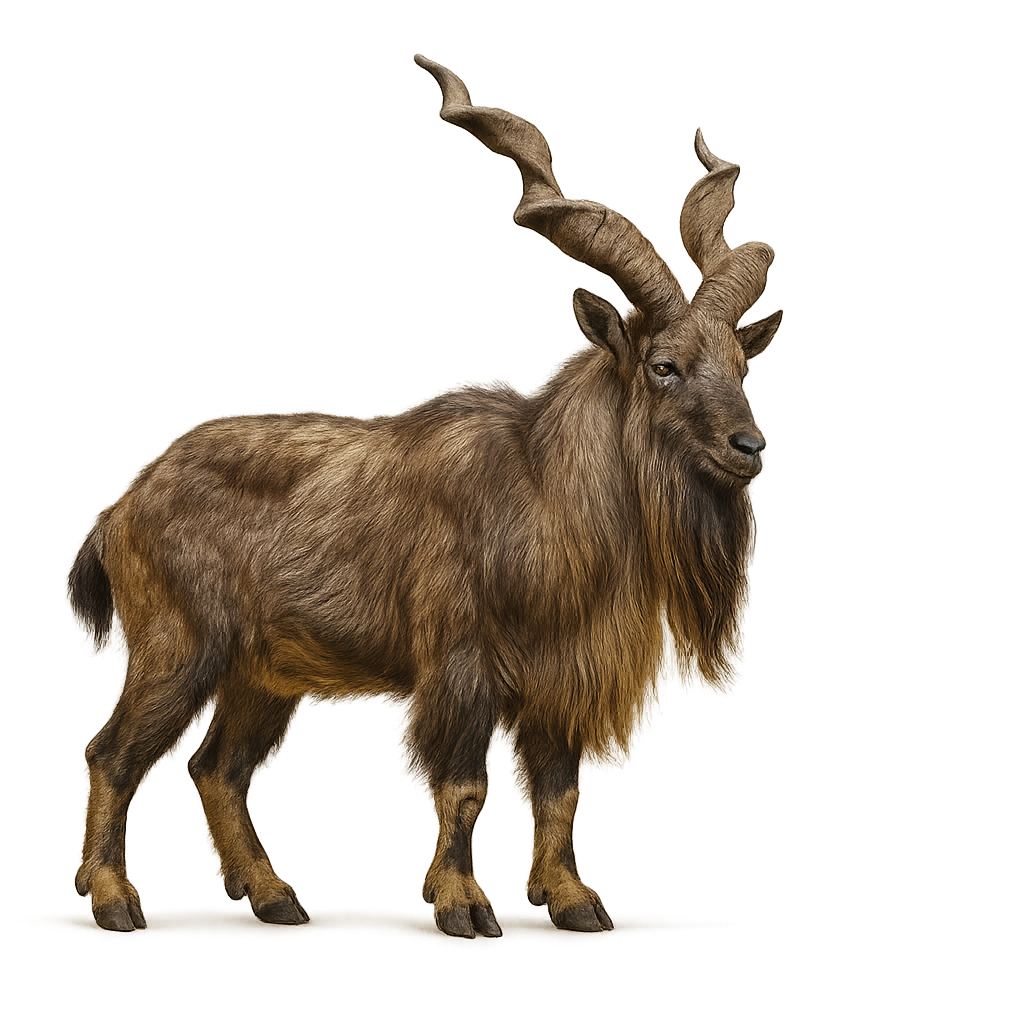
The Markhor is a wild goat species native to the mountains of Central Asia, primarily found in Afghanistan, Pakistan, Tajikistan, and India. It stands about 1.2 to 1.5 meters tall at the shoulder, with a body length of 1.5 to 2 meters, and weighs between 30 and 115 kg, with males generally being larger and more massive than females. The Markhor is famous for its impressive spiral horns, which can grow up to 1.5 meters long in adult males. Its coat is thick, typically brown or gray, with lighter fur on the belly and legs. It lives in mountainous and rocky areas, often at altitudes between 1,000 and 3,000 meters. The Markhor is an herbivore, feeding on mountain vegetation, including shrubs, leaves, and grasses. Although it is an agile climber and skilled at navigating steep terrain, it is also preyed upon by large predators such as snow leopards. The Markhor is classified as vulnerable due to overhunting, habitat loss, and human disturbances, but conservation efforts have helped stabilize its population in some areas.
The Mona monkey, or Cercopithecus mona, is a medium-sized primate native to the tropical forests of West Africa. It is characterized by its golden-brown fur, white face, and long tail. Mona monkeys live in social groups and are known for their agility and ability to move quickly through the canopy. They primarily feed on fruits, but their diet also includes leaves, flowers, and insects. These monkeys are diurnal and spend most of their time foraging and socializing. Although generally wary of humans, they can become accustomed to their presence in protected areas.
The Malayan bear is the smallest of the bears, characterized by its small size, black fur, and a light-colored fur collar around its neck. It primarily lives in the tropical forests of Southeast Asia, where it feeds on fruits, honey, and insects. This animal is rather discreet, nocturnal, and semi-arboreal, often seen in trees looking for food. Although protected, the Malayan bear faces serious threats such as deforestation and illegal hunting.
The Minke Whale is a medium-sized cetacean, a member of the baleen whale family, found in the Atlantic, Pacific, and Southern Oceans. It measures between 7 and 10 meters in length and weighs between 5 and 10 tons. Its body is streamlined, and its color ranges from gray-blue to black, with a lighter belly. This whale primarily feeds on plankton, small fish, and crustaceans, which it filters by swimming with its mouth open. It is an excellent swimmer and can dive to impressive depths for several minutes. While its population remains stable, the Minke Whale is threatened by ocean pollution, ship collisions, and habitat loss due to human impact on marine ecosystems.
The Mediterranean monk seal is a large marine mammal, 2–3 m long and weighing 200–350 kg, with a streamlined grey body and smooth skin. A critically endangered species of the Mediterranean coast and eastern Atlantic, it occupies coastal caves, remote beaches and shallow waters, feeding mainly on fish and cephalopods.
The Mainland Serow, Capricornis milneedwardsii, is a robust caprine found in the mountainous forests of Southeast Asia. It is characterized by its thick, dark coat, often black or dark brown, and its short, slightly curved horns. Adapted to rugged terrains, it is an excellent climber. Serows are generally solitary or live in small family groups. Their diet mainly consists of leaves, shoots, and grasses. Although elusive, the serow plays a crucial role in its ecosystem by aiding in seed dispersal. Unfortunately, it is threatened by hunting and habitat loss.
The Alouatta palliata, commonly known as the mantled howler, is an arboreal primate primarily found in the tropical forests of Central and South America. Recognizable by its powerful howl that can be heard for miles, it plays a crucial role in seed dispersal, aiding forest regeneration. This monkey has a black coat with a distinctive golden mane. It lives in hierarchical social groups composed of several males and females. Howler monkeys are primarily herbivorous, feeding on leaves, fruits, and flowers. Their vocal behavior is essential for intra-group communication and territorial defense. Although their population is stable, deforestation poses a threat to their natural habitat.
The Callicebus personatus, commonly known as the masked titi monkey, is a medium-sized primate native to the tropical forests of southeastern Brazil. It is characterized by its dark face surrounded by dense, silky brownish fur. These monkeys live in small family groups and are known for their strong social bonds, often seen grooming each other. They primarily feed on fruits, but their diet also includes leaves and insects. Their natural habitat is threatened by deforestation, leading to a decline in their population. Despite this, they sometimes adapt to fragmented forest areas.
The Meerkat is a small carnivorous mammal primarily found in the dry and desert regions of southern Africa, notably in South Africa, Botswana, and Namibia. It typically measures about 25 to 35 cm in length, with a tail of 20 to 25 cm, and weighs between 0.6 and 1 kg. Its fur is gray-brown, with lighter spots on the belly, and it has a small head and large black eyes. The Meerkat is especially known for its characteristic posture, standing on its hind legs to survey its surroundings. It lives in organized social groups, called "clans," and primarily feeds on insects, small reptiles, and fruits. While its population remains relatively stable, the Meerkat is threatened by habitat loss and human disturbances.
The mountain zebra (Equus zebra) is a sturdy equid standing 1.2–1.4 m at the shoulder and weighing 200–350 kg, characterized by bold black and white stripes that broaden across the torso and narrow on the legs, with a pale rump patch. Endemic to southern Africa’s mountainous regions, it inhabits montane grasslands, rocky steppes and steep slopes, grazing on short grasses and low shrubs. It is social, forming family herds of a stallion, several mares and their offspring, which the stallion defends. Breeding occurs year-round, with births peaking from November to April, aligning with the rainy season to maximize foal survival.


